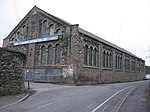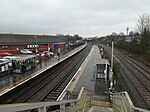Bristol power stations
Coal-fired power stations in EnglandDemolished buildings and structures in BristolDemolished power stations in the United KingdomFormer power stations in England
Bristol power stations supplied electricity to the City of Bristol and the surrounding area from 1893 to 1959. Temple Back and Avonbank (Feeder Road) power stations were built by the Bristol Corporation which operated them up to the nationalisation of the British electricity supply industry in 1948. Refer to article on Portishead power station for details about that station.
Excerpt from the Wikipedia article Bristol power stations (License: CC BY-SA 3.0, Authors).Bristol power stations
Bristol St Philip's Marsh
Geographical coordinates (GPS) Address Nearby Places Show on map
Geographical coordinates (GPS)
| Latitude | Longitude |
|---|---|
| N 51.45 ° | E -2.5666666666667 ° |
Address
BS2 0TH Bristol, St Philip's Marsh
England, United Kingdom
Open on Google Maps










